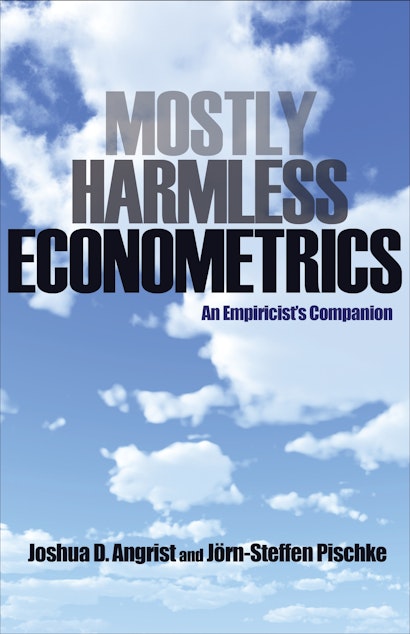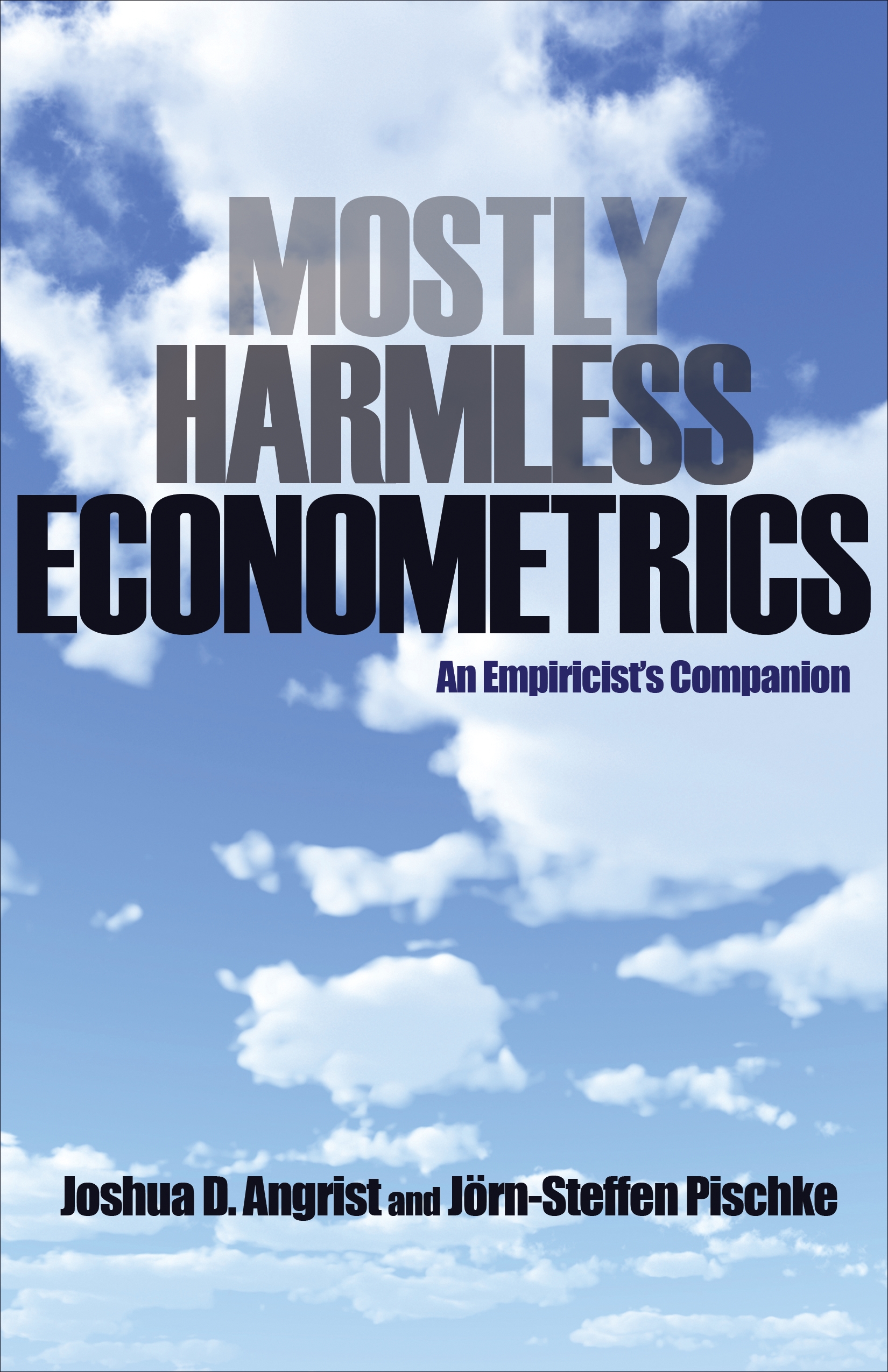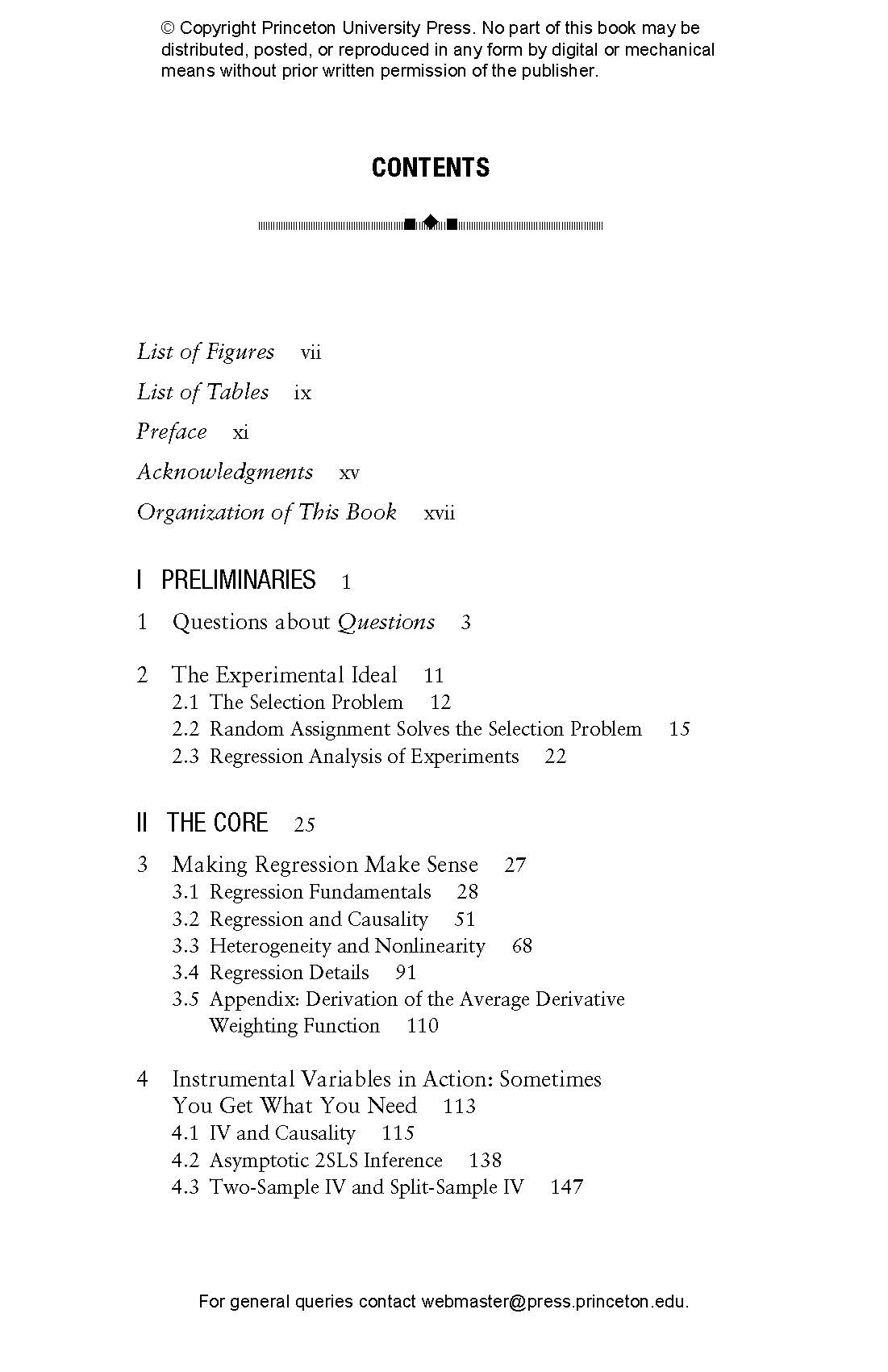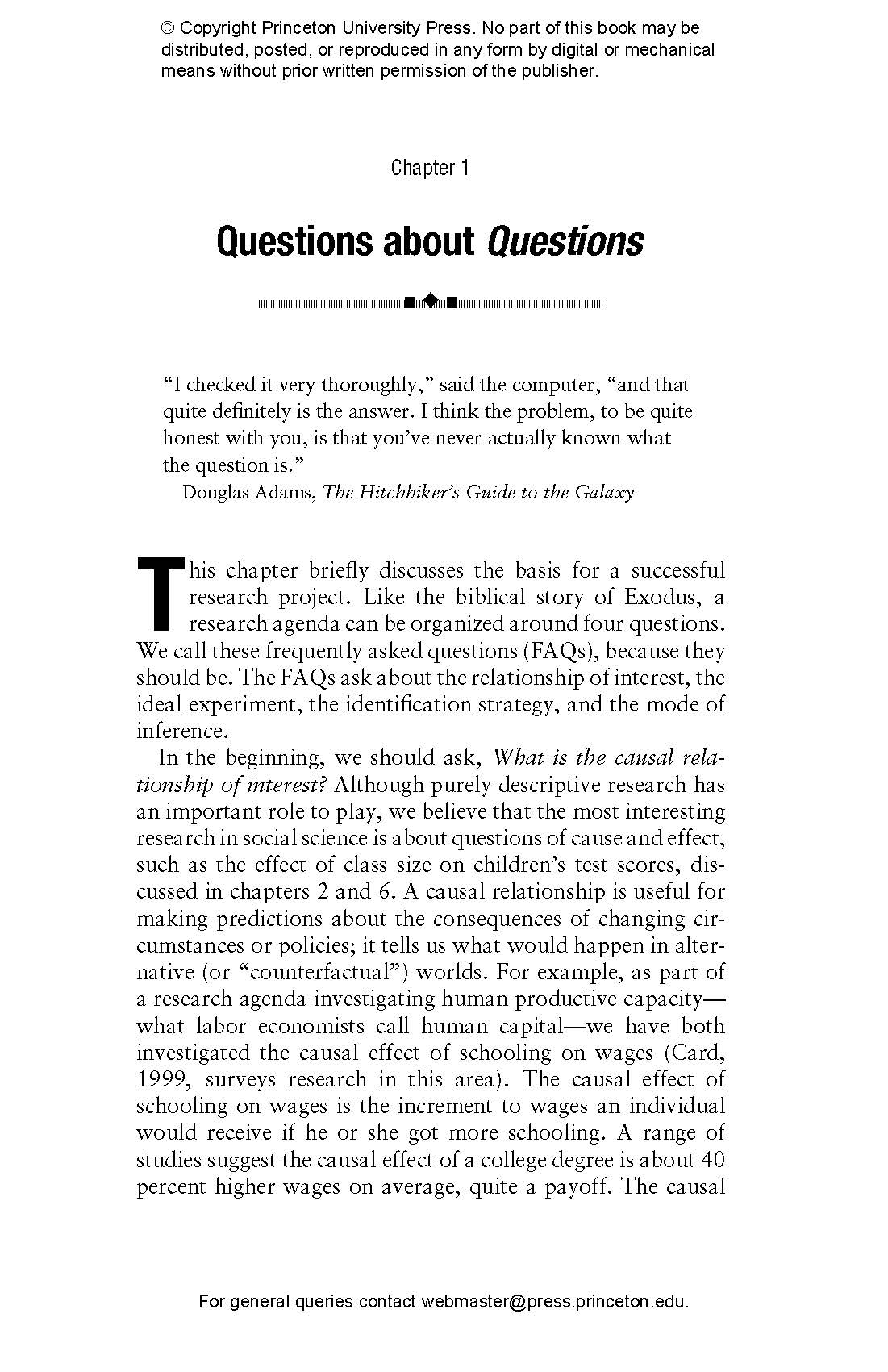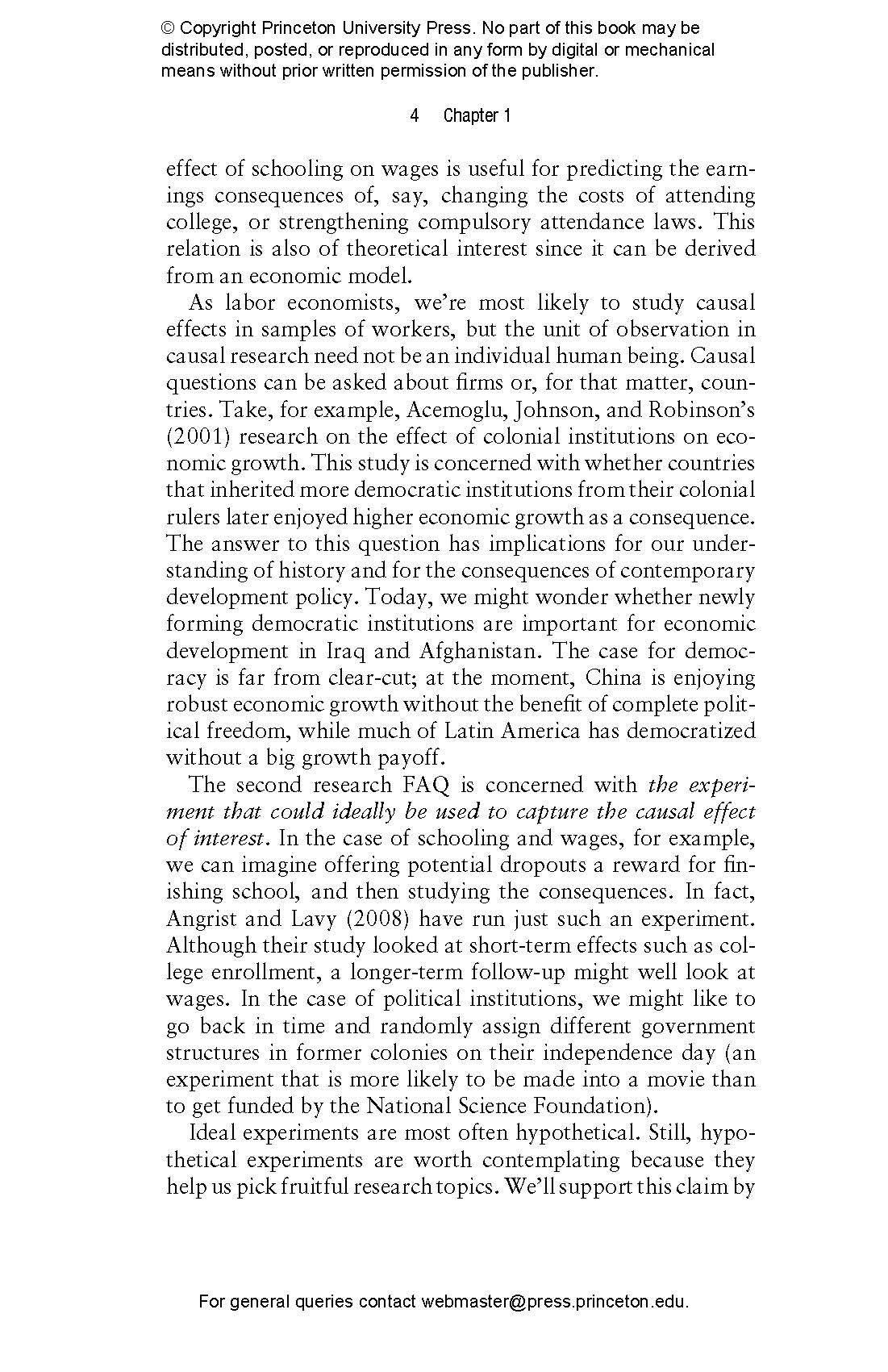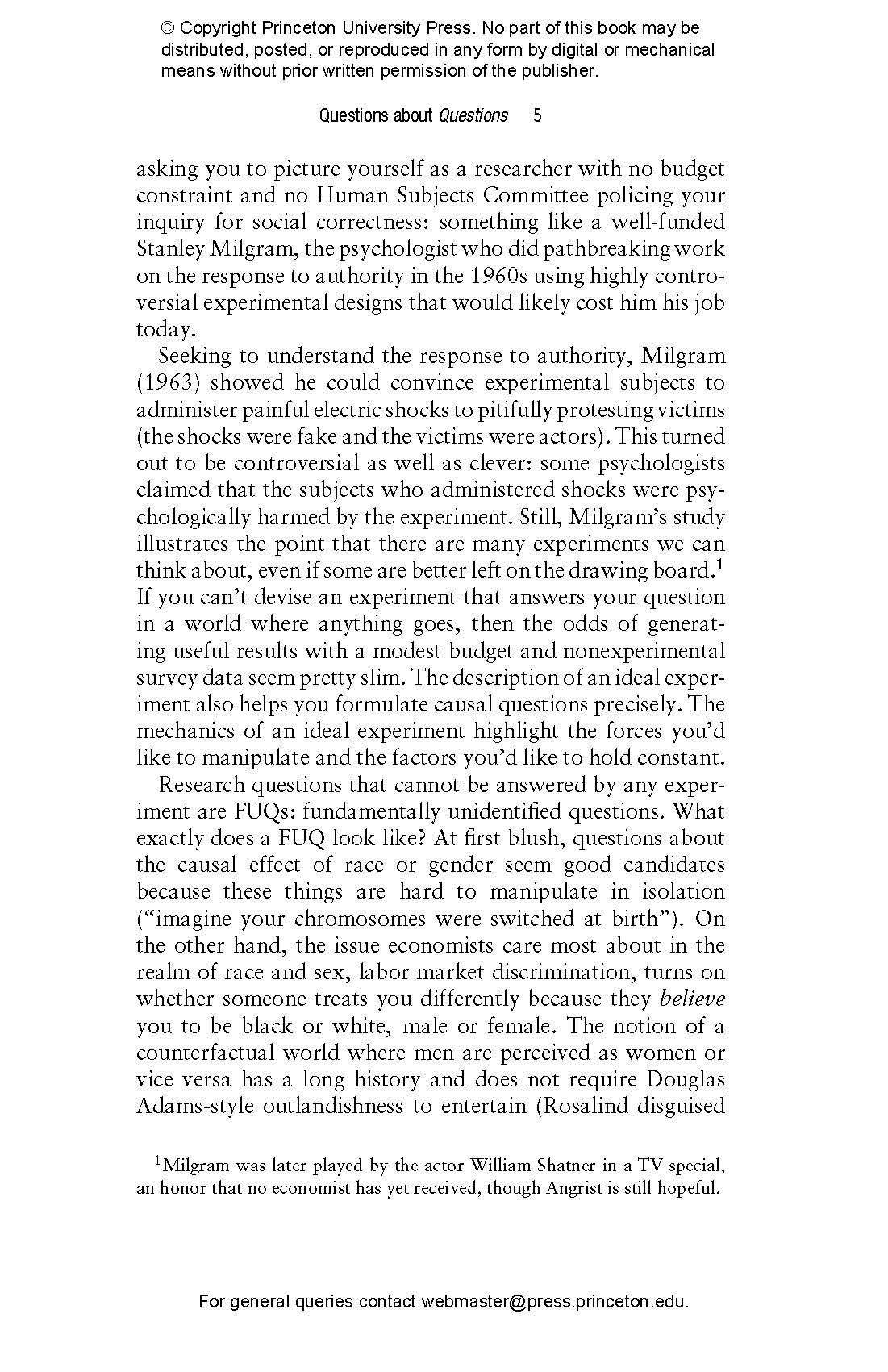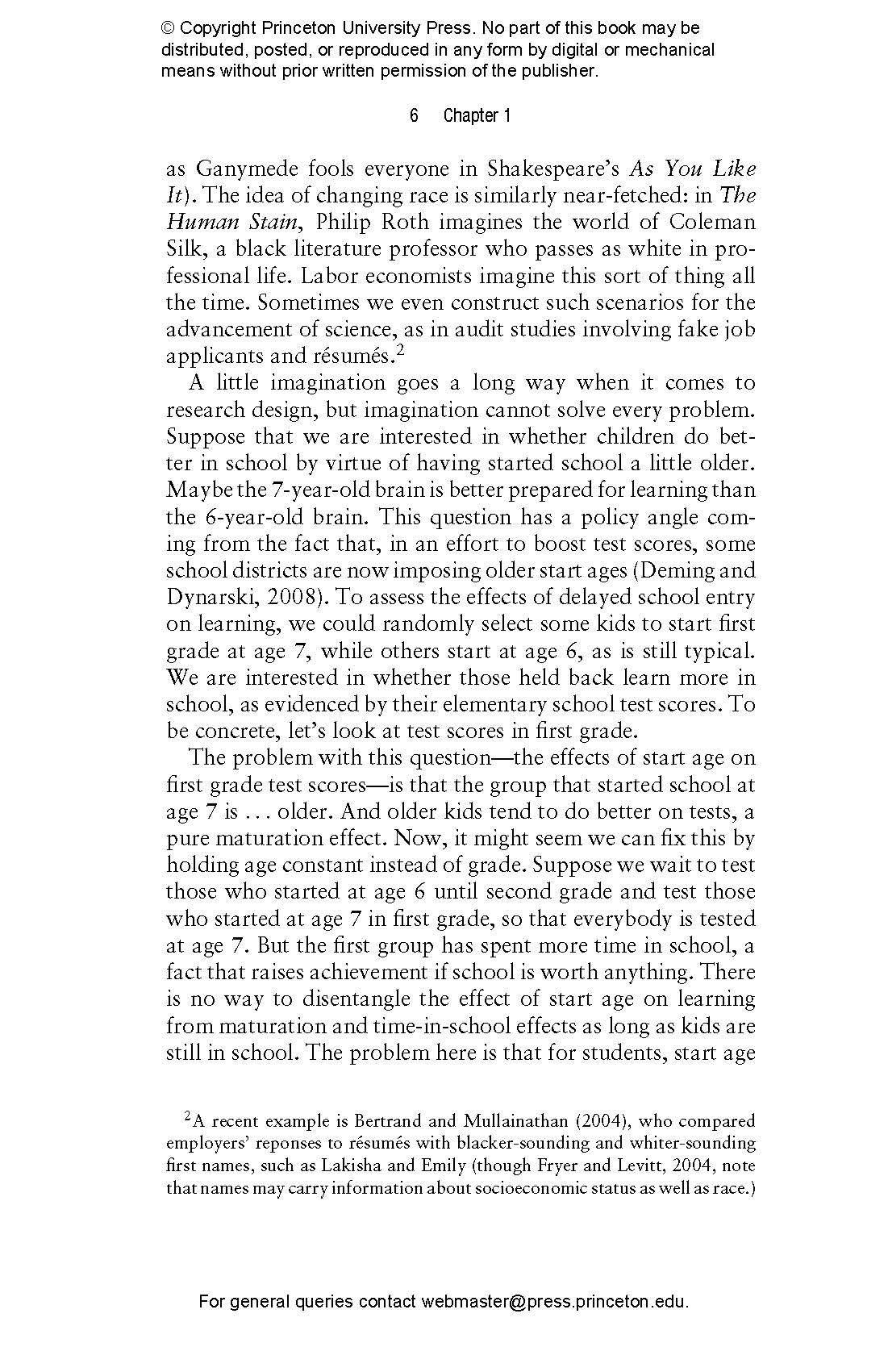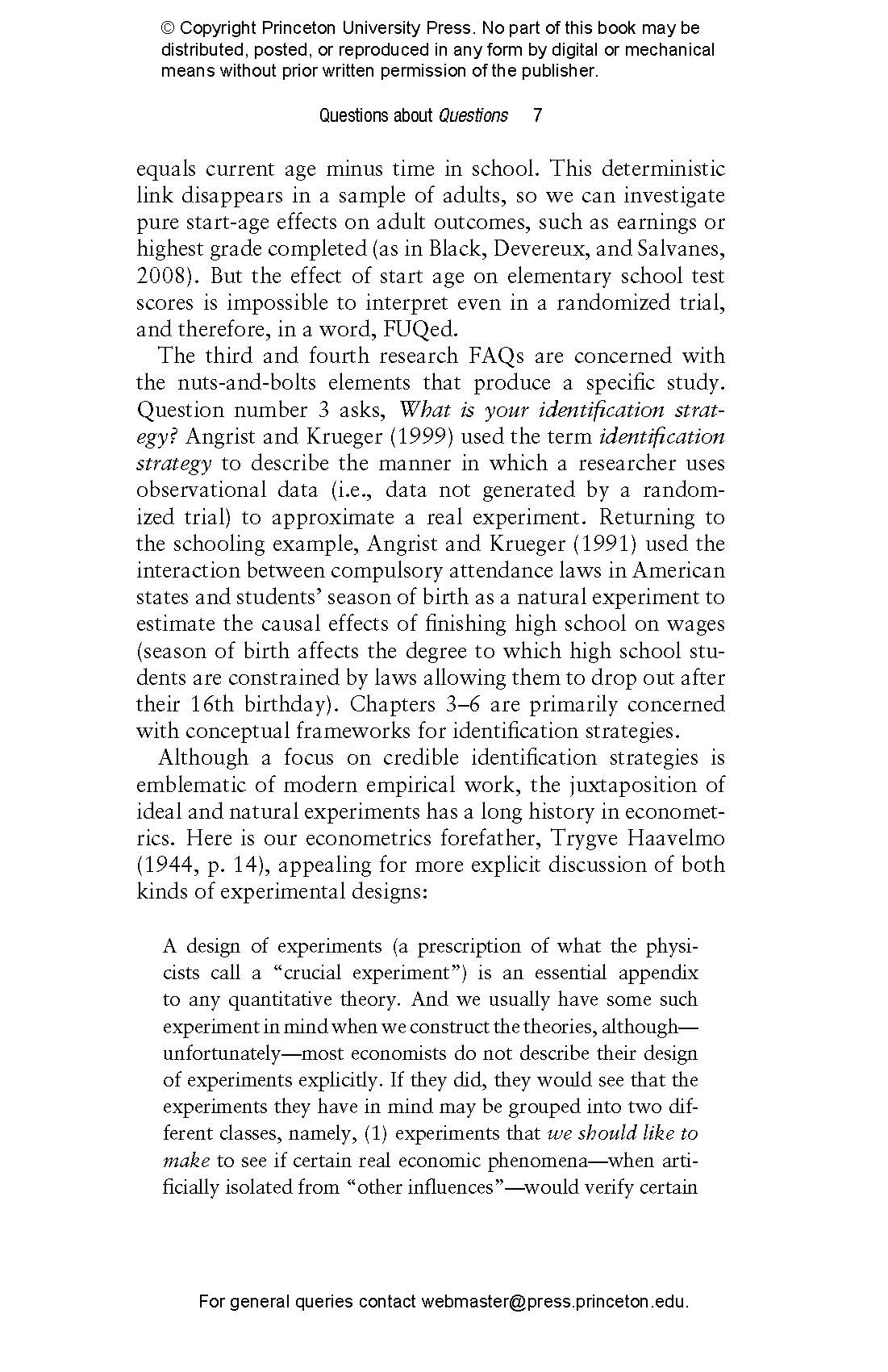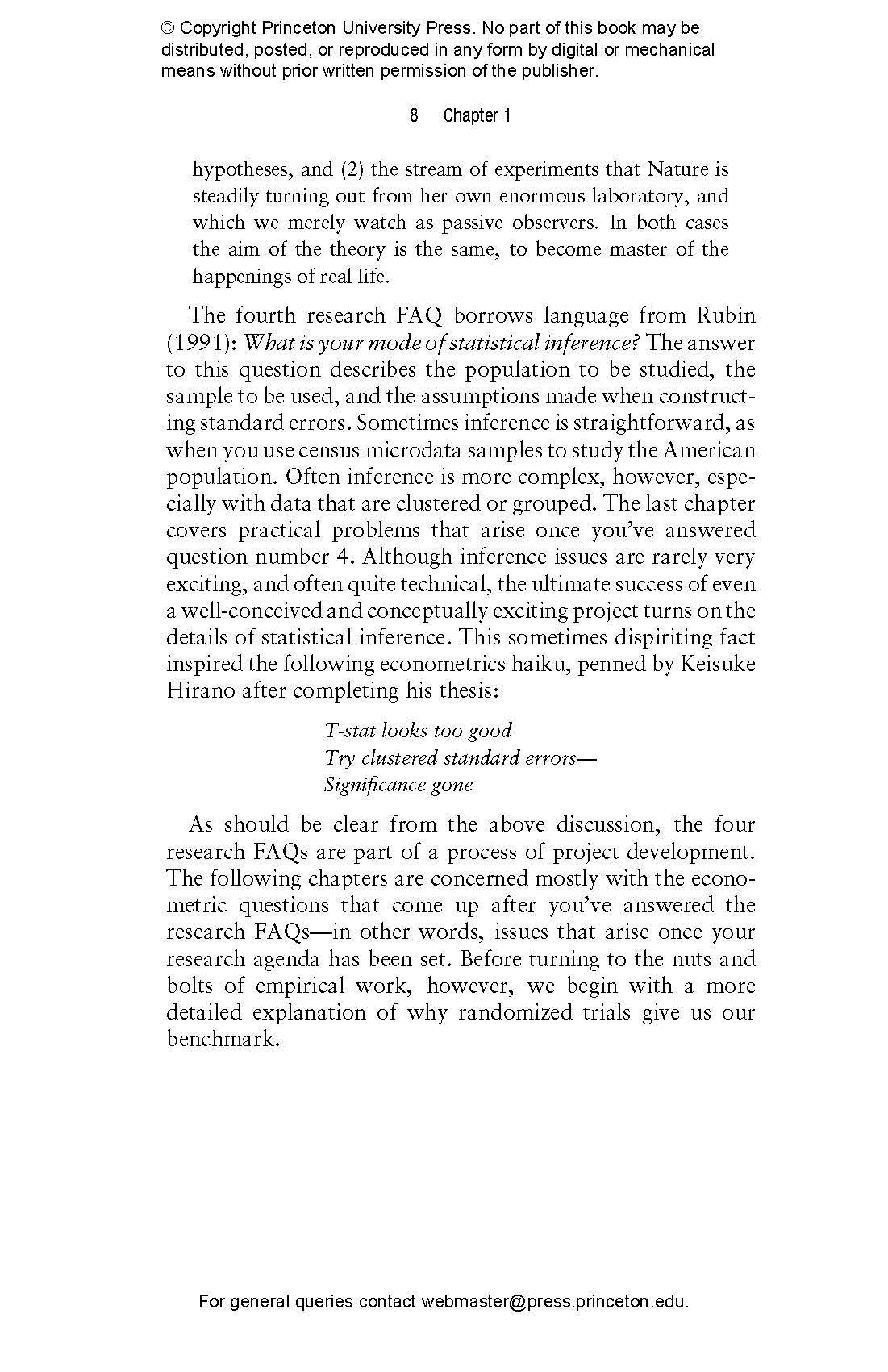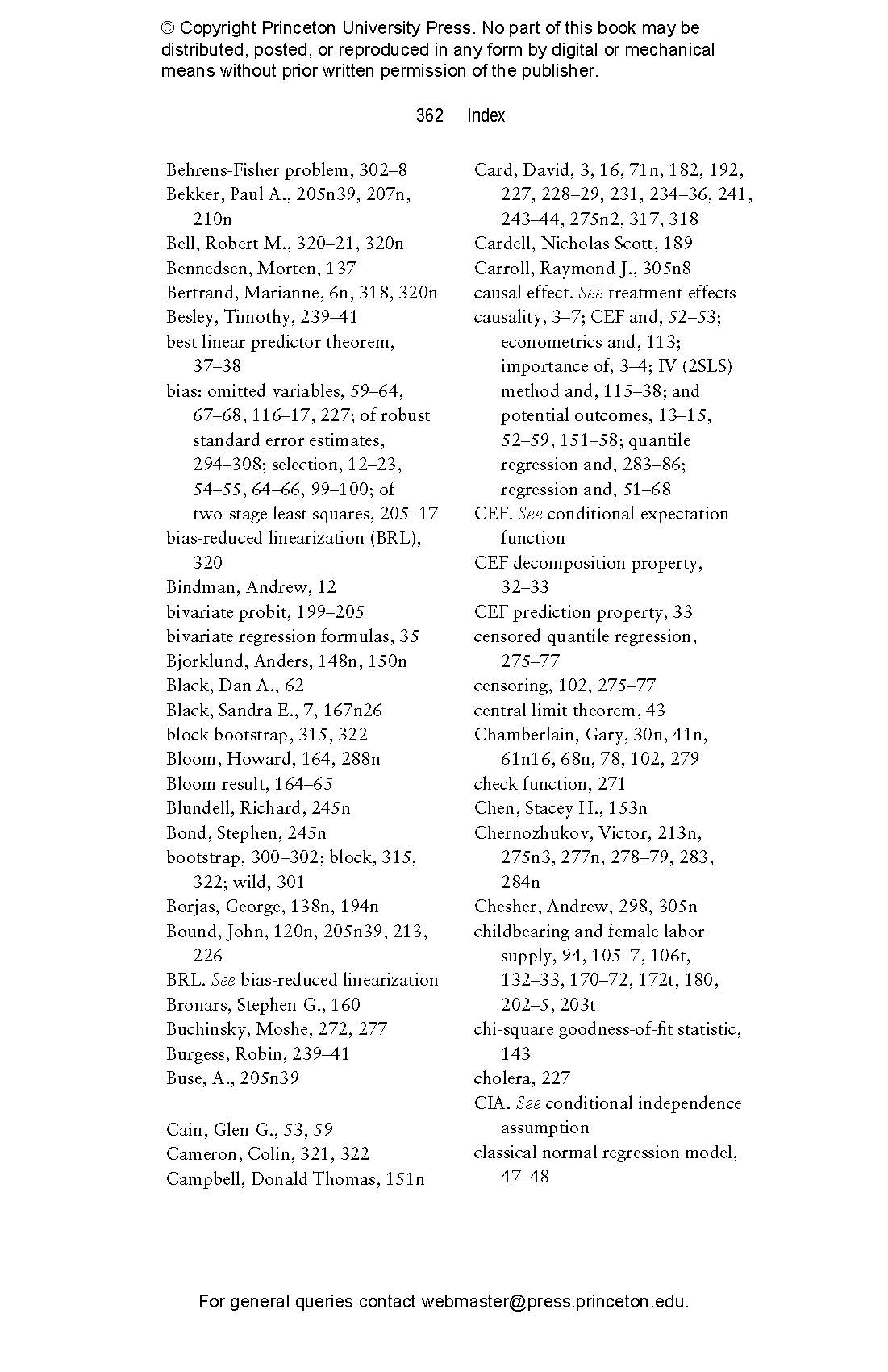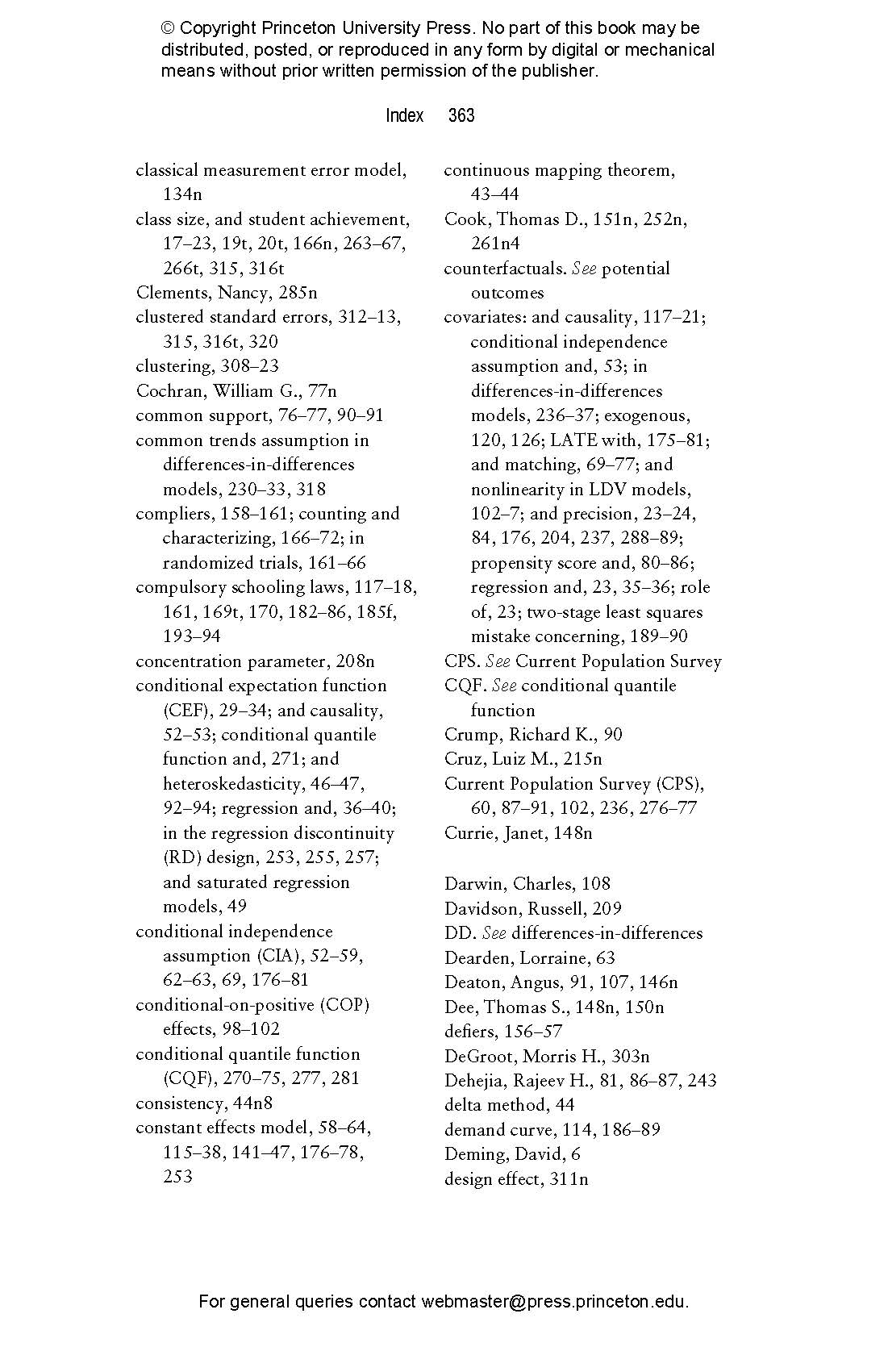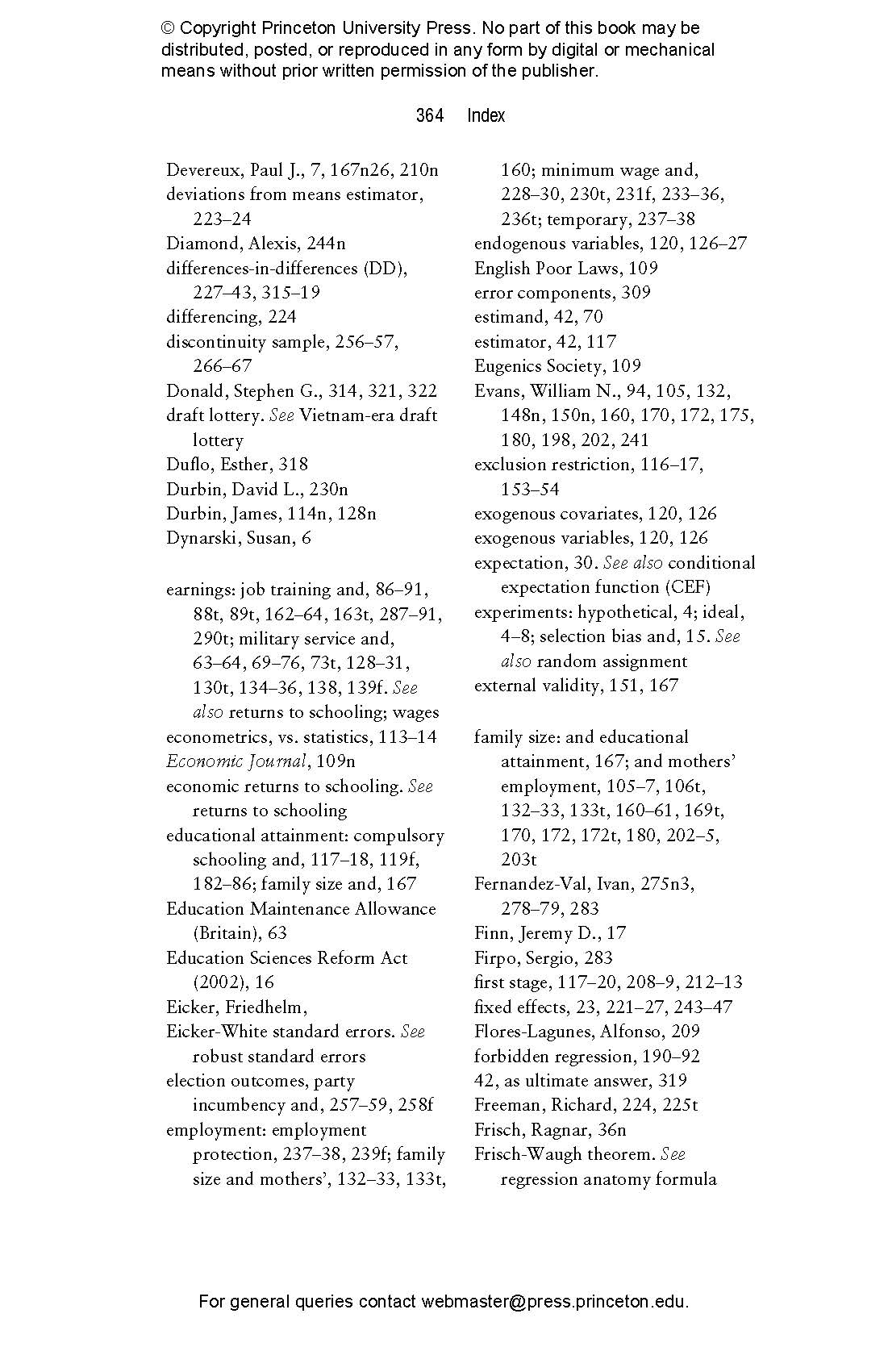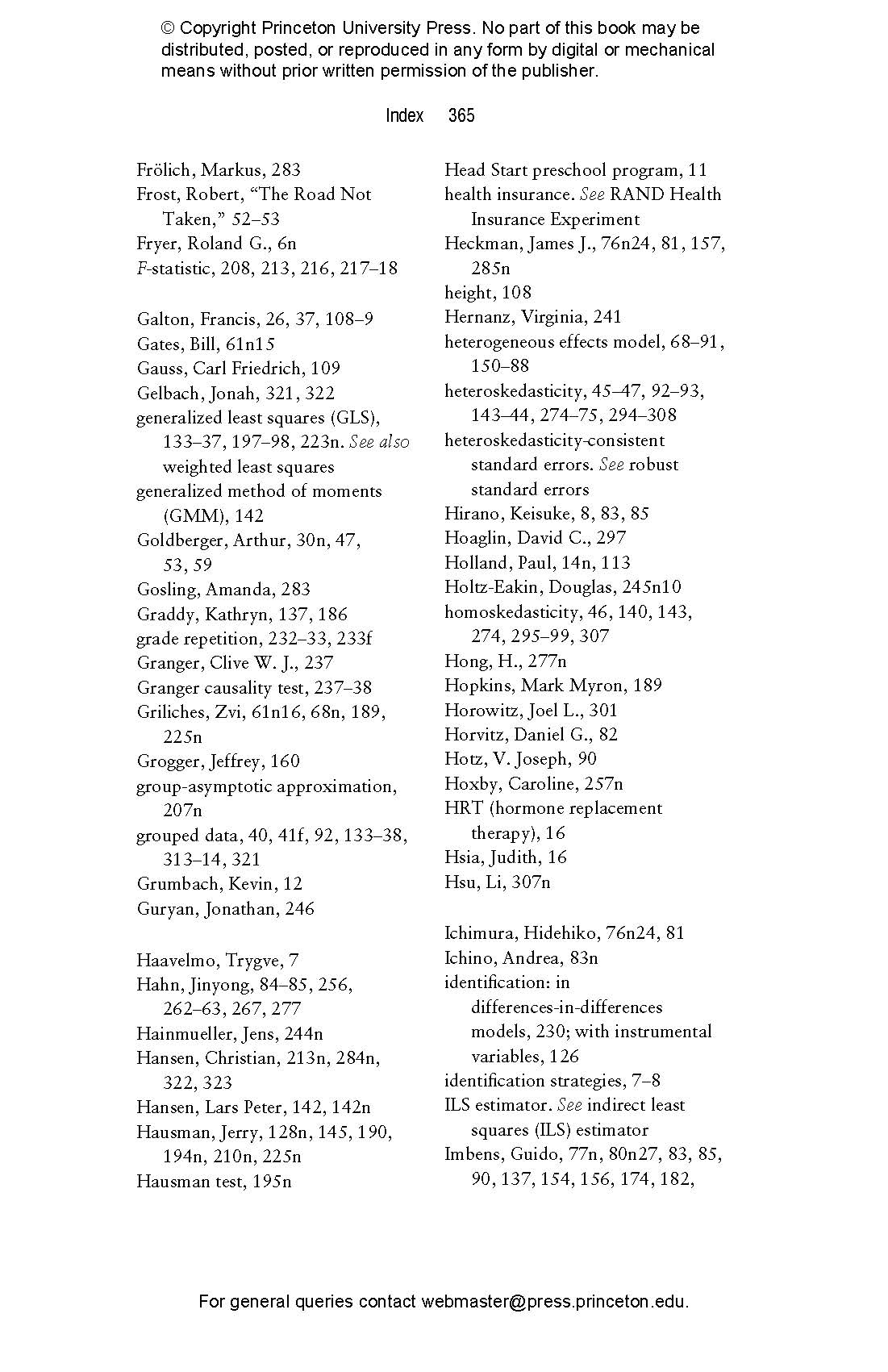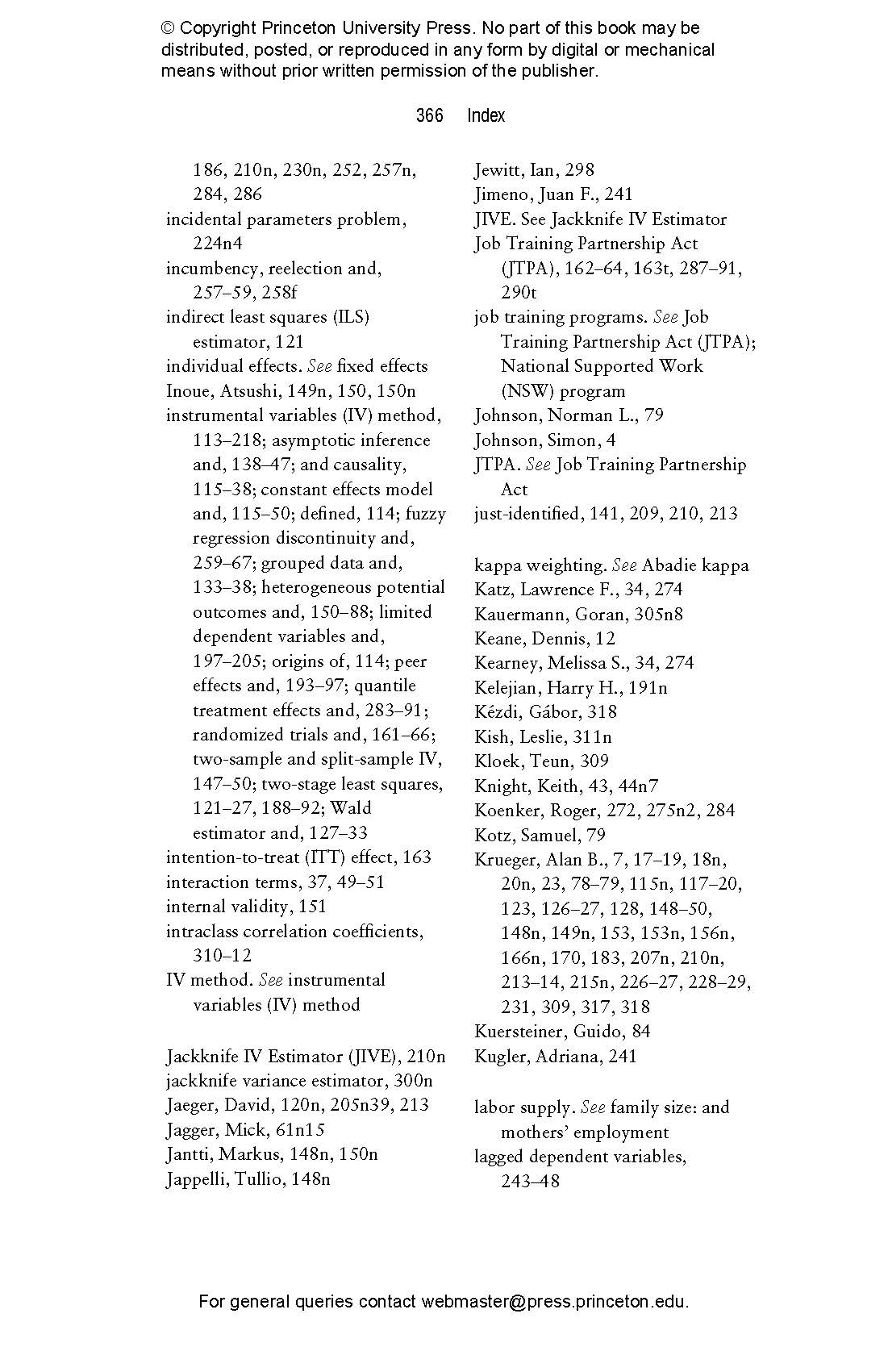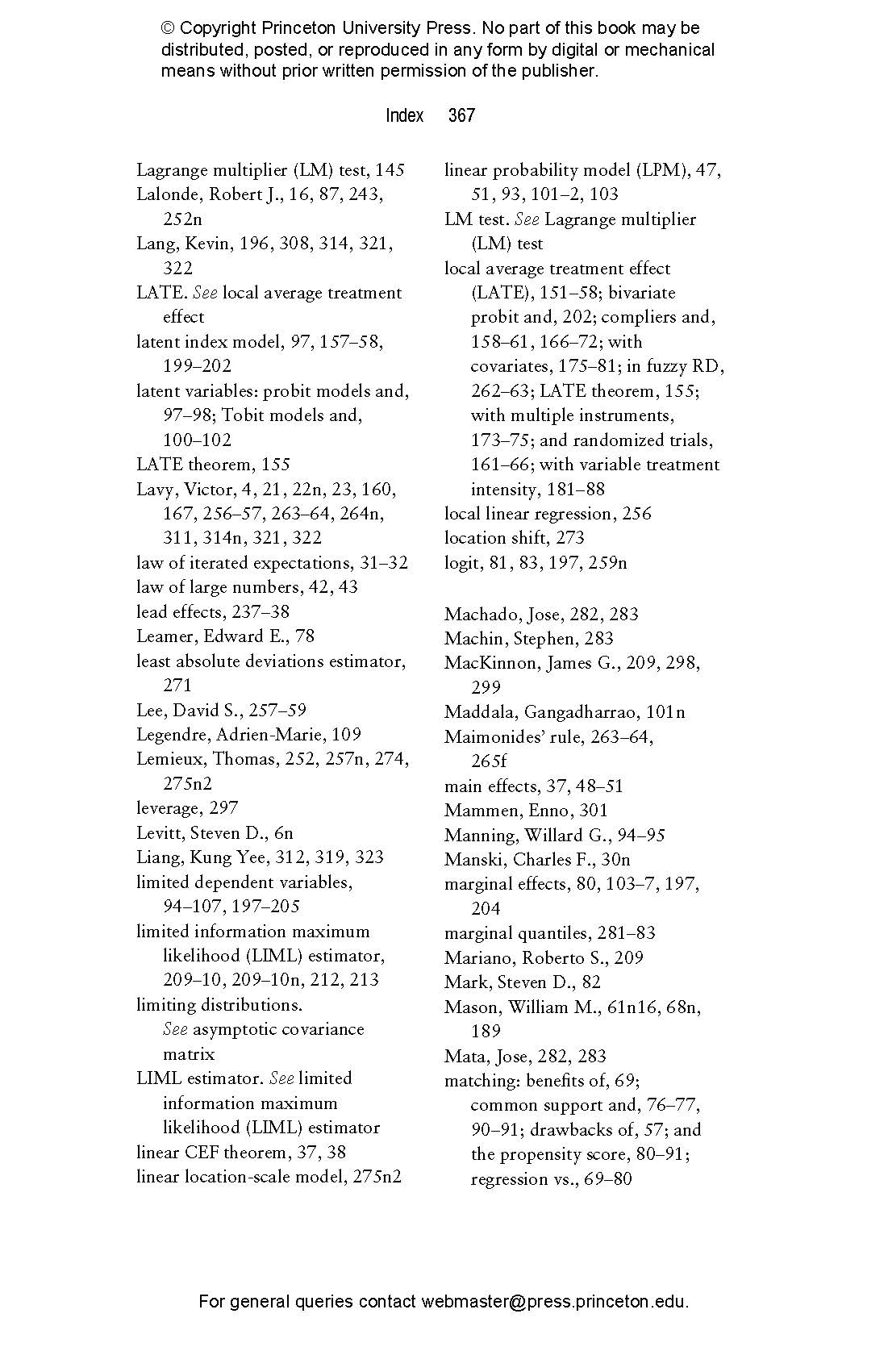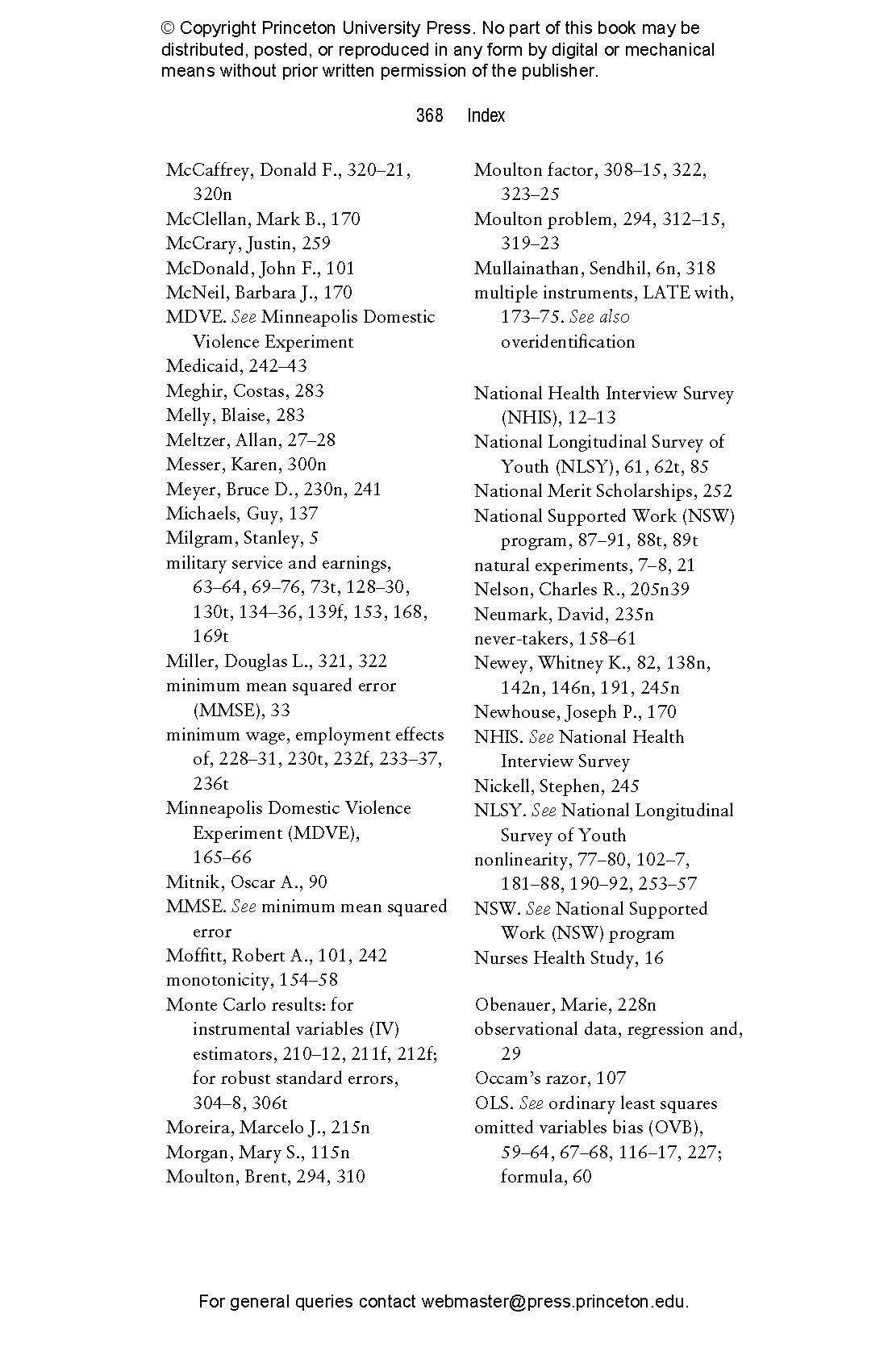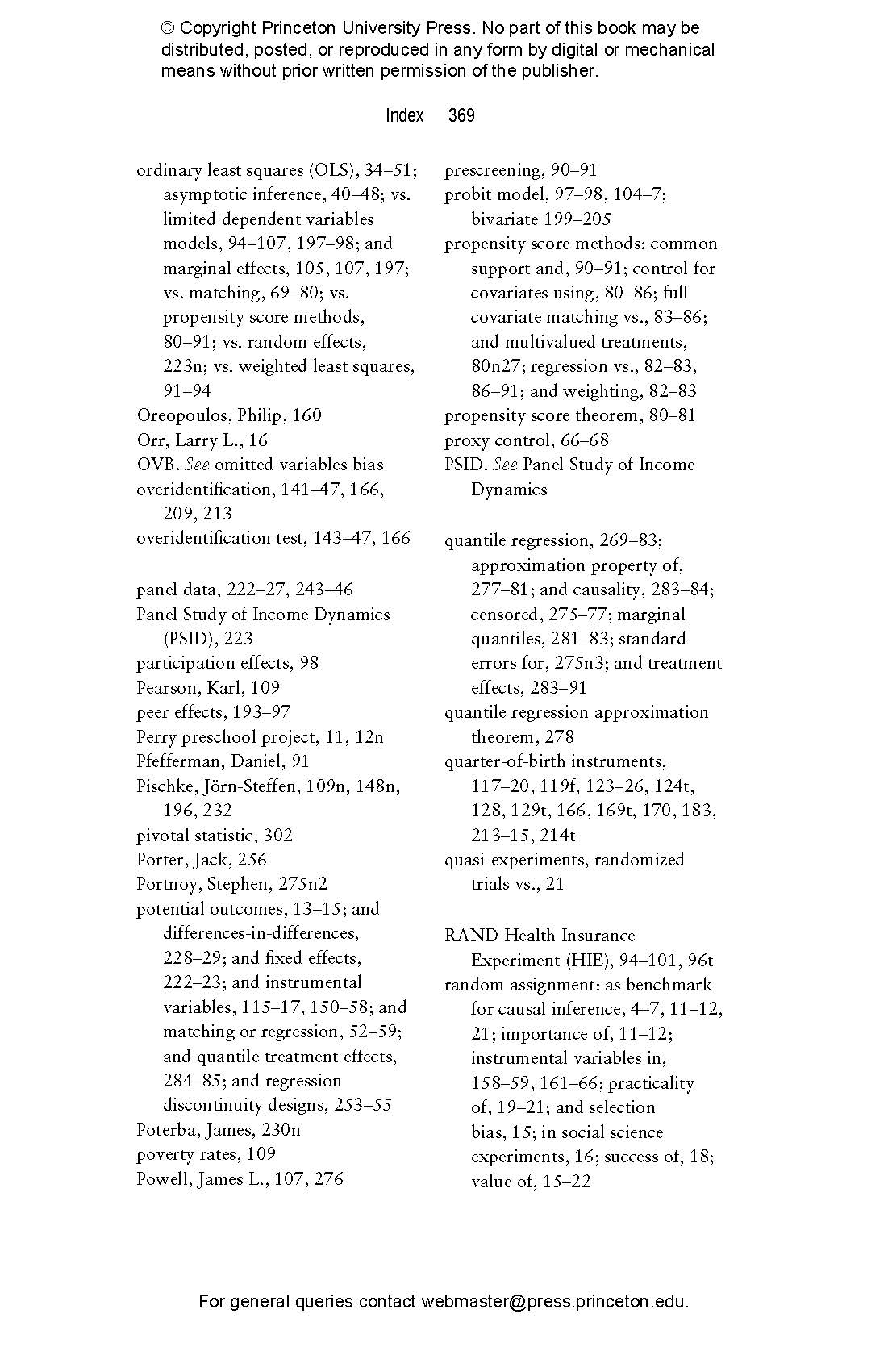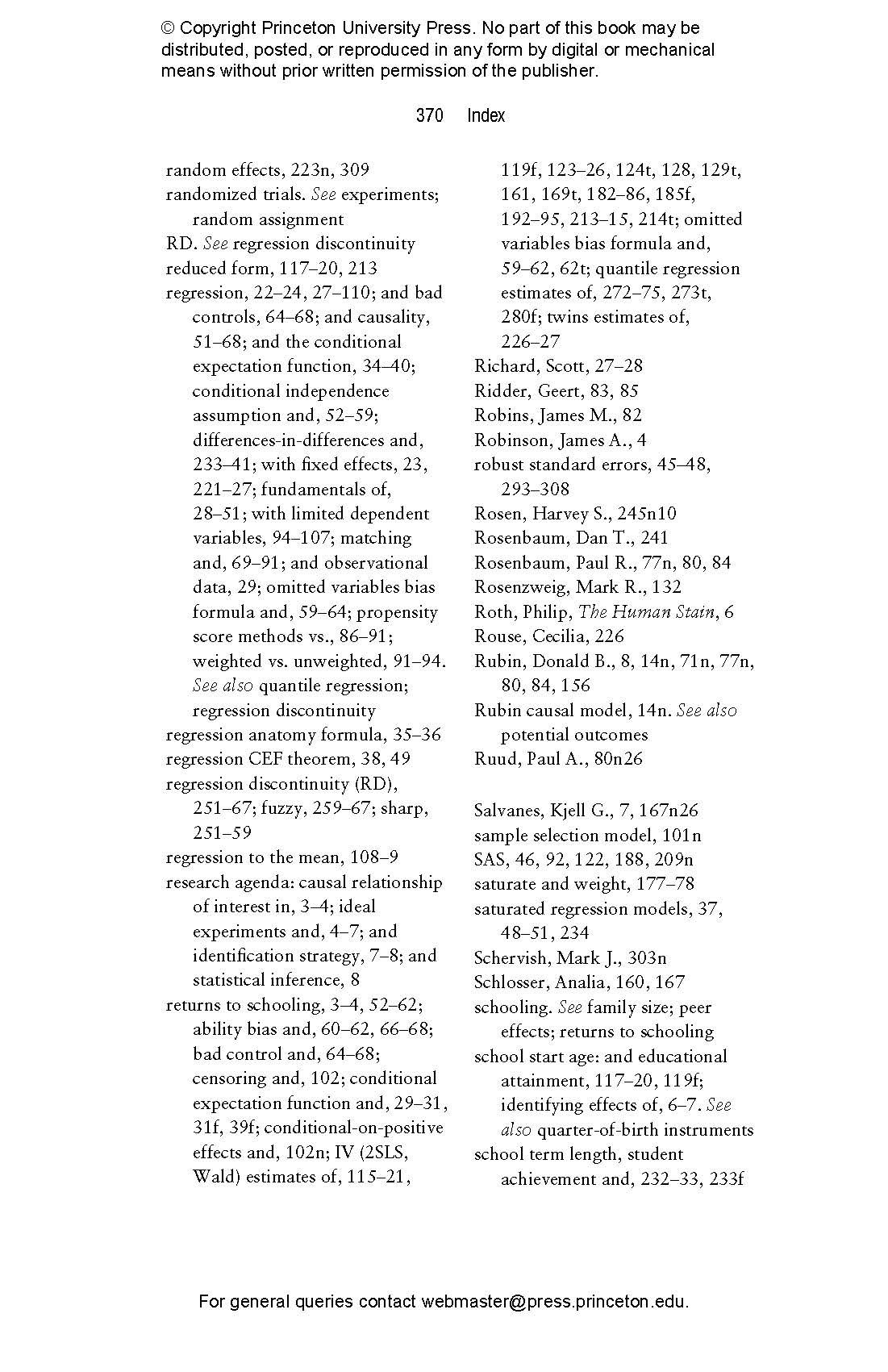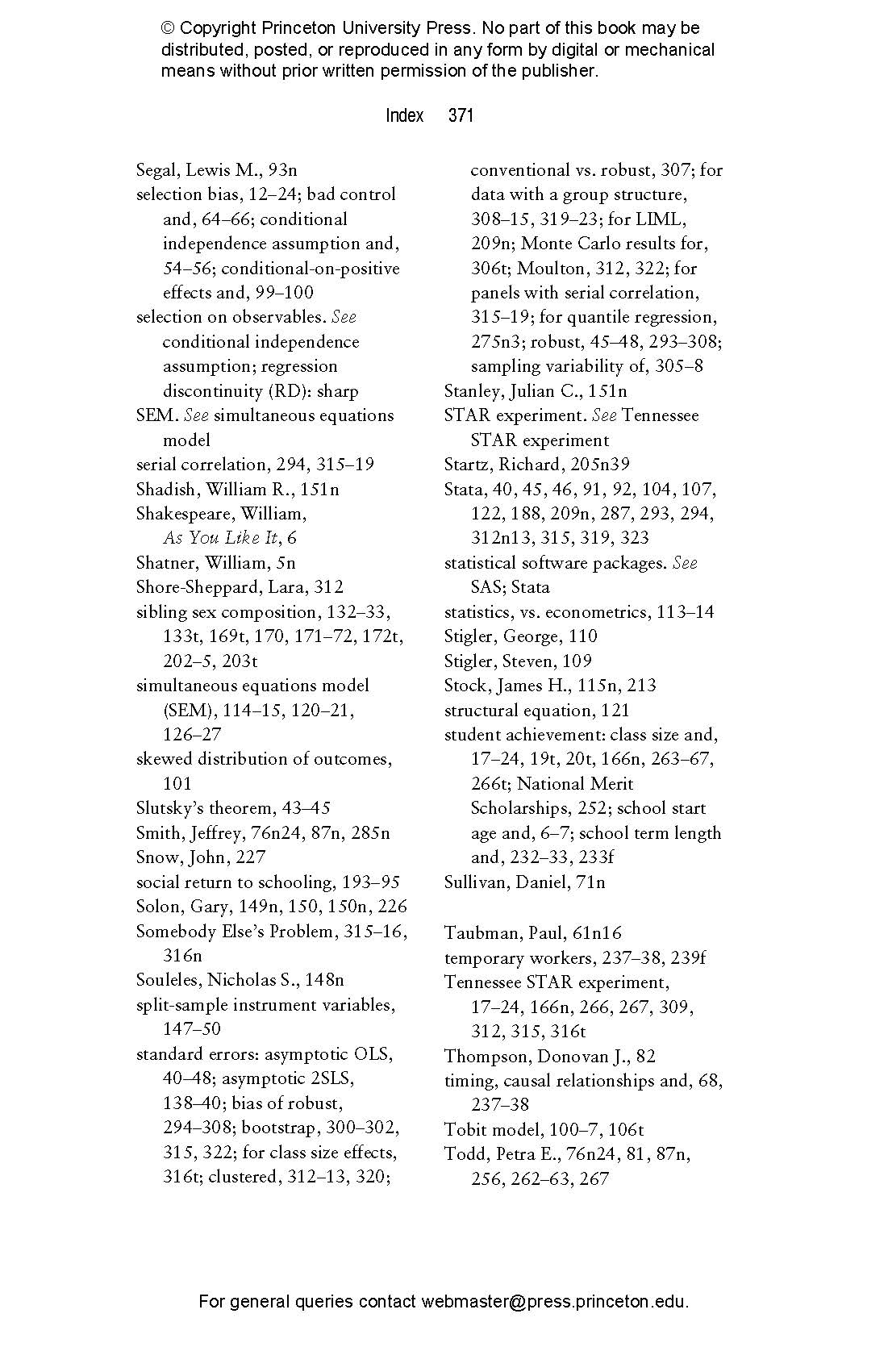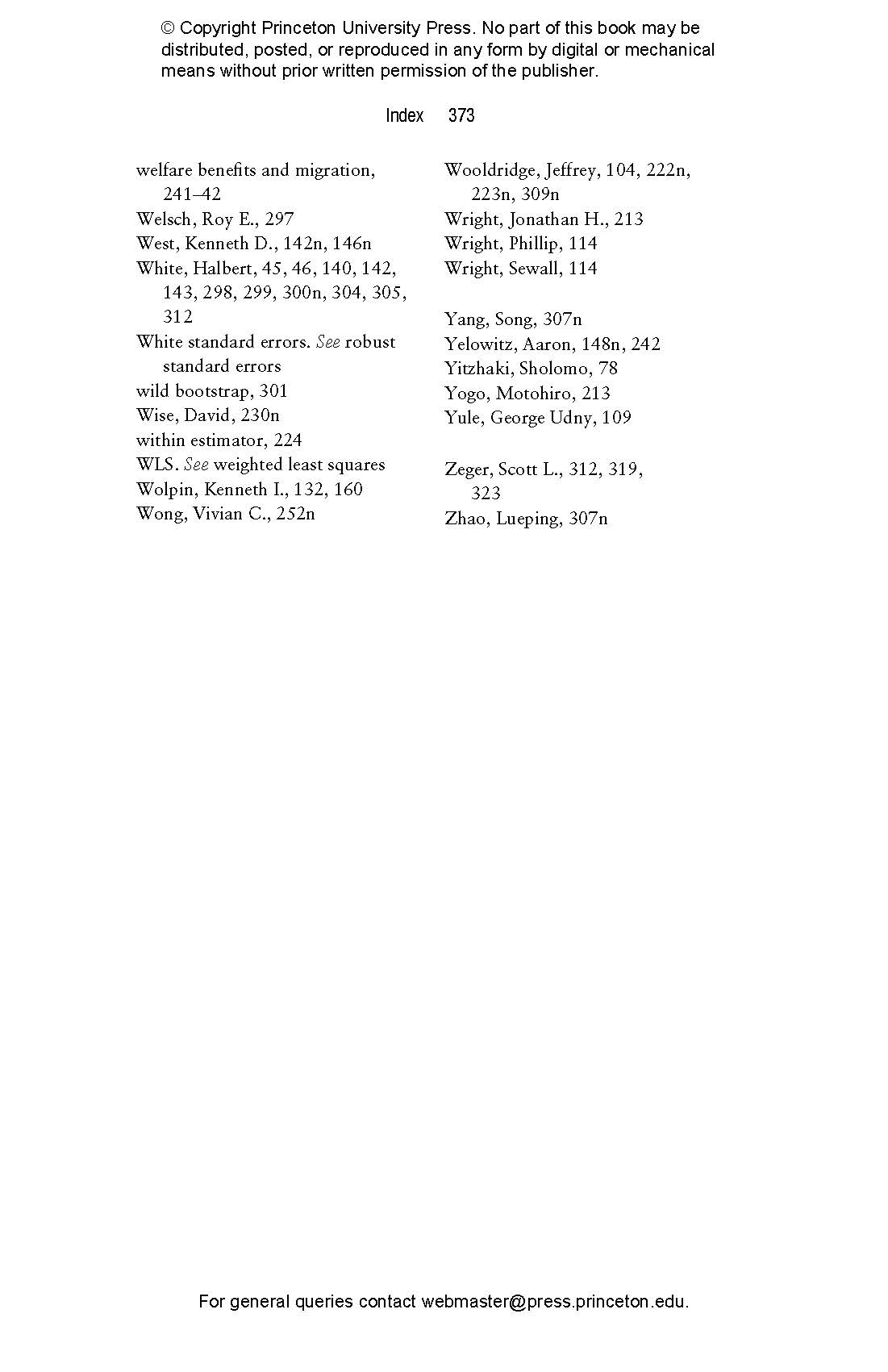The core methods in today’s econometric toolkit are linear regression for statistical control, instrumental variables methods for the analysis of natural experiments, and differences-in-differences methods that exploit policy changes. In the modern experimentalist paradigm, these techniques address clear causal questions such as: Do smaller classes increase learning? Should wife batterers be arrested? How much does education raise wages? Mostly Harmless Econometrics shows how the basic tools of applied econometrics allow the data to speak.
In addition to econometric essentials, Mostly Harmless Econometrics covers important new extensions—regression-discontinuity designs and quantile regression—as well as how to get standard errors right. Joshua Angrist and Jörn-Steffen Pischke explain why fancier econometric techniques are typically unnecessary and even dangerous. The applied econometric methods emphasized in this book are easy to use and relevant for many areas of contemporary social science.
- An irreverent review of econometric essentials
- A focus on tools that applied researchers use most
- Chapters on regression-discontinuity designs, quantile regression, and standard errors
- Many empirical examples
- A clear and concise resource with wide applications
Awards and Recognition
- Winner of the 2018 (Second) Eugene Fama Prize for Outstanding Contributions to Doctoral Education, University of Chicago Booth School of Business
Joshua D. Angrist, winner of the 2021 Nobel Prize in Economics, is the Ford Professor of Economics at the Massachusetts Institute of Technology. Jörn-Steffen Pischke is professor of economics at the London School of Economics and Political Science.
List of Figures vii
List of Tables ix
Preface xi
Acknowledgments xv
Organization of This Book xvii
PART I: PRELIMINARIES 1
Chapter 1: Questions about Questions 3
Chapter 2: The Experimental Ideal 11
2.1 The Selection Problem 12
2.2 Random Assignment Solves the Selection Problem 15
2.3 Regression Analysis of Experiments 22
PART II: THE CORE 25
Chapter 3: Making Regression Make Sense 27
3.1 Regression Fundamentals 28
3.2 Regression and Causality 51
3.3 Heterogeneity and Nonlinearity 68
3.4 Regression Details 91
3.5 Appendix: Derivation of the Average Derivative Weighting Function 110
Chapter 4: Instrumental Variables in Action: Sometimes You Get What You Need 113
4.1 IV and Causality 115
4.2 Asymptotic 2SLS Inference 138
4.3 Two-Sample IV and Split-Sample IV 147
4.4 IV with Heterogeneous Potential Outcomes 150
4.5 Generalizing LATE 173
4.6 IV Details 188
4.7 Appendix 216
Chapter 5: Parallel Worlds: Fixed Effects, Differences-in-Differences, and Panel Data 221
5.1 Individual Fixed Effects 221
5.2 Differences-in-Differences 227
5.3 Fixed Effects versus Lagged Dependent Variables 243
5.4 Appendix: More on Fixed Effects and Lagged Dependent Variables 246
PART III: EXTENSIONS 249
Chapter 6: Getting a Little Jumpy: Regression Discontinuity Designs 251
6.1 Sharp RD 251
6.2 Fuzzy RD Is IV 259
Chapter 7: Quantile Regression 269
7.1 The Quantile Regression Model 270
7.2 IV Estimation of Quantile Treatment Effects 283
Chapter 8: Nonstandard Standard Error Issues 293
8.1 The Bias of Robust Standard Error Estimates 294
8.2 Clustering and Serial Correlation in Panels 308
8.3 Appendix: Derivation of the Simple Moulton Factor 323
Last Words 327
Acronyms and Abbreviations 329
Empirical Studies Index 335
References 339
Index 361
"A quirky and thought-provoking read for any budding econometrician. . . . Insightful and refreshing."—James Davidson, Times Higher Education
"I'd recommend it to the entire range of empirical economists, from those still in training to those who, like me, have only a hazy memory of statistical theory and stick to our tried and tested methods of estimation . . . an excellent guide to how to do basic regression/IV/panel data estimation really well. In particular, it demonstrates through many examples how to bring about a happy marriage between one's underlying model and the data which might or might not confirm the researcher's hypotheses."—Diane Coyle, The Enlightened Economist Blog
"The applied econometric methods emphasized in this book are easy to use and relevant for many areas of contemporary social sciences."—Pavel Stoynov, Zentralblatt MATH
"This book is an extremely thought-provoking contribution to the literature. It champions a different paradigm to that characterising most econometrics texts and does so with considerable (idiosyncratic) style and grace. Highly recommended!"—David Harris and Christopher L. Skeels, Economic Record
"The matter covered in the book is surely of interest to most agricultural economists. Even if it is not a complete overview of existing econometric research methods, it certainly contains a good deal of hands on advice driven by years of experience."—European Review of Agricultural Economics
"This pathbreaking book is a must-read for any scientist who is interested in formulating and testing hypotheses about the social world. This includes political scientists, sociologists, historians, geographers, and anthropologists. The book is clever and funny, and guides you through the tangle of problems that confront empirical research in social science. I wish I had had it years ago."—James Robinson, Harvard University
"What a fascinating and useful book! The application of econometrics in empirical research is as much art as science. What is most distinctive about Mostly Harmless Econometrics relative to other graduate-level econometrics books (besides the colorful prose style!) is that because the authors are longtime practitioners of applied microeconometrics, they speak often and insightfully about the art. I expect it's a great thing to work in the same department with Angrist or Pischke and to be able to ask their advice. Having this book close at hand is the next best thing. When you consult the book to see 'What would Angrist and Pischke do?' about econometric issues you encounter in your own research, you won't necessarily end up doing what they would in every single instance, but I bet you always will benefit from getting their take on the issue."—Gary Solon, Michigan State University
"Interesting and unusual, this is an econometrics book with attitude. It offers real answers and suggestions to problems faced daily by those engaged in the analysis of economic data. I will recommend it to my students."—Guido Imbens, Harvard University
"A well-written and very quirky take on econometric practice."—Orley Ashenfelter, Princeton University
